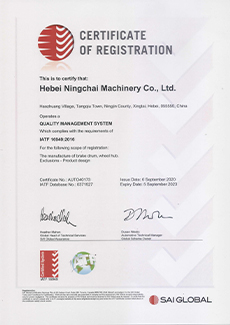
-
 Afrikaans
Afrikaans -
 Albanian
Albanian -
 Amharic
Amharic -
 Arabic
Arabic -
 Armenian
Armenian -
 Azerbaijani
Azerbaijani -
 Basque
Basque -
 Belarusian
Belarusian -
 Bengali
Bengali -
 Bosnian
Bosnian -
 Bulgarian
Bulgarian -
 Catalan
Catalan -
 Cebuano
Cebuano -
 Corsican
Corsican -
 Croatian
Croatian -
 Czech
Czech -
 Danish
Danish -
 Dutch
Dutch -
 English
English -
 Esperanto
Esperanto -
 Estonian
Estonian -
 Finnish
Finnish -
 French
French -
 Frisian
Frisian -
 Galician
Galician -
 Georgian
Georgian -
 German
German -
 Greek
Greek -
 Gujarati
Gujarati -
 Haitian Creole
Haitian Creole -
 hausa
hausa -
 hawaiian
hawaiian -
 Hebrew
Hebrew -
 Hindi
Hindi -
 Miao
Miao -
 Hungarian
Hungarian -
 Icelandic
Icelandic -
 igbo
igbo -
 Indonesian
Indonesian -
 irish
irish -
 Italian
Italian -
 Japanese
Japanese -
 Javanese
Javanese -
 Kannada
Kannada -
 kazakh
kazakh -
 Khmer
Khmer -
 Rwandese
Rwandese -
 Korean
Korean -
 Kurdish
Kurdish -
 Kyrgyz
Kyrgyz -
 Lao
Lao -
 Latin
Latin -
 Latvian
Latvian -
 Lithuanian
Lithuanian -
 Luxembourgish
Luxembourgish -
 Macedonian
Macedonian -
 Malgashi
Malgashi -
 Malay
Malay -
 Malayalam
Malayalam -
 Maltese
Maltese -
 Maori
Maori -
 Marathi
Marathi -
 Mongolian
Mongolian -
 Myanmar
Myanmar -
 Nepali
Nepali -
 Norwegian
Norwegian -
 Norwegian
Norwegian -
 Occitan
Occitan -
 Pashto
Pashto -
 Persian
Persian -
 Polish
Polish -
 Portuguese
Portuguese -
 Punjabi
Punjabi -
 Romanian
Romanian -
 Russian
Russian -
 Samoan
Samoan -
 Scottish Gaelic
Scottish Gaelic -
 Serbian
Serbian -
 Sesotho
Sesotho -
 Shona
Shona -
 Sindhi
Sindhi -
 Sinhala
Sinhala -
 Slovak
Slovak -
 Slovenian
Slovenian -
 Somali
Somali -
 Spanish
Spanish -
 Sundanese
Sundanese -
 Swahili
Swahili -
 Swedish
Swedish -
 Tagalog
Tagalog -
 Tajik
Tajik -
 Tamil
Tamil -
 Tatar
Tatar -
 Telugu
Telugu -
 Thai
Thai -
 Turkish
Turkish -
 Turkmen
Turkmen -
 Ukrainian
Ukrainian -
 Urdu
Urdu -
 Uighur
Uighur -
 Uzbek
Uzbek -
 Vietnamese
Vietnamese -
 Welsh
Welsh -
 Bantu
Bantu -
 Yiddish
Yiddish -
 Yoruba
Yoruba -
 Zulu
Zulu
rear drum brake problems
Common Problems with Rear Drum Brakes
Rear drum brakes are a traditional braking system found in many vehicles, especially older models and budget-friendly cars. While they are generally reliable and cost-effective, they can encounter several problems that may compromise their performance. Understanding these issues can help drivers maintain their vehicles and ensure safety on the road.
1. Worn Brake Shoes
One of the most common problems with rear drum brakes is the wear and tear of the brake shoes. Brake shoes have a friction material that presses against the drum to create stopping power. Over time, this material wears down due to constant friction. Symptoms of worn brake shoes include a decrease in braking efficiency, a grinding noise when braking, and a noticeable vibration in the brake pedal. Regular inspections can help identify the need for replacement before they get too thin.
The brake drum itself can also suffer from various issues. Warping or cracking of the drum can happen due to excessive heat generated during braking. Overheating often leads to a phenomenon called brake fade, where the brakes become less effective. Drivers may notice a spongy brake feel or an unusual noise during braking. Routine checks for drum integrity can prevent these issues, and in severe cases, replacement may be necessary.
3. Brake Fluid Leaks
rear drum brake problems

Another concern in drum brake systems is brake fluid leakage. While more common in disc brakes, leaks can occur in drum systems as well, particularly at the wheel cylinder, which forces the brake shoes against the drum. Low brake fluid levels can lead to diminished braking effectiveness or total brake failure. Drivers should regularly check their brake fluid levels and watch for puddles under their vehicles as an indication of leaks.
4. Misalignment and Adjustment Issues
Drum brakes require periodic adjustment to maintain proper functionality. If the brakes are too loose, it can result in delayed engagement, making it difficult for the vehicle to stop effectively. Conversely, if they are too tight, it can lead to excessive wear and overheating. Misalignment can also occur due to the suspension system, leading to uneven wear patterns on the brake shoes. It’s essential to have drum brakes adjusted and realigned as part of routine maintenance.
5. Noise and Squeaking
A common indicator of problems in rear drum brakes is unusual noise, such as squeaking or grinding. This could signal worn brake shoes, improperly installed components, or even the need for lubrication on pivot points. Addressing these noises early can help prevent further damage and ensure safety.
Conclusion
While rear drum brakes may be less common in modern vehicles, they remain prevalent and functional in many cars today. Understanding these potential problems and their symptoms can empower drivers to take proactive steps in their vehicle's maintenance. Regular inspections and proper servicing can extend the life of rear drum brakes and ensure optimal performance, keeping drivers and passengers safe on the road.
-
What Are Drum BrakesNewsJul.07,2025
-
Understanding Brake Drum MaterialNewsJul.07,2025
-
Semi-Trailer Brake Drum: A Key Component for Extreme Loads and Long-Distance TransportNewsJul.07,2025
-
Drum Brake Pads for SaleNewsJul.07,2025
-
Brake Drums for SaleNewsJul.07,2025
-
Brake Drum ManufacturerNewsJul.07,2025
-
Aluminum Brake Drums: The Future of High-Performance CarsNewsJul.07,2025
